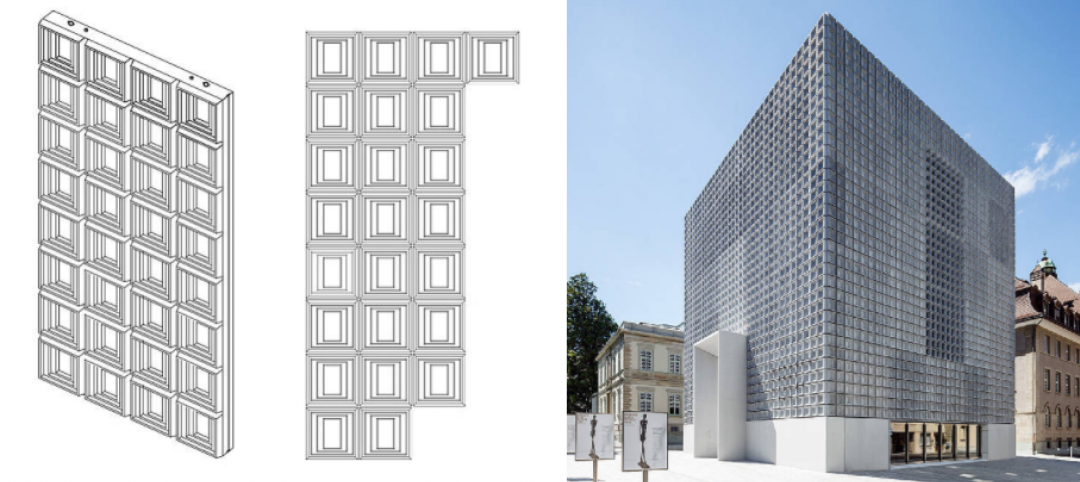The jury for the American Institute of Architects (AIA) Upjohn Research Initiative, a grant program that supports applied research that advances design and professional practice, has announced the five projects selected to receive grants.
The purpose of this grant, now in its 10th year, is to provide base funds for applied research projects that advance professional knowledge and practice. The 18-month long project grant qualifies recipients to have their findings and outcomes published both electronically and in a nationally distributed publication. The total award of $100,000 will be spread across the selected proposals. The jury, comprised of members of the AIA College of Fellows and Board Knowledge Committee, felt the process and deliberations were fully consistent with the double blind-peer review intent of the program. This double blind-peer review helps add an element of rigor to the process whereby proposals are debated on their own merits. The following five submissions were selected for funding:
A Circadian Daylight Metric and Design Assist Tool for Improved Occupant Health and Well-Being
Principal Investigator: Kyle Konis, AIA, Ph.D. (University of Southern California)
All zones within a building that do not regularly achieve the lighting conditions necessary for effective circadian stimulus can be labeled as biologically dark and considered as zones where regular occupancy may be problematic for health and well-being. The objective of this research is to develop a daylighting Metric and Design Assist Tool capable of assessing the circadian potential of architectural space. Procedures using annual, climate-based daylight analysis of eye-level light exposures will be developed to map the circadian effectiveness of a given space. The Design Assist Tool can be used to assess and differentiate the performance of various daylighting strategies during the design phases of a project or to quantify the circadian effectiveness of existing spaces.
Post Natural Material Assemblies
Principal Investigators: Meredith L. Miller (University of Michigan), Thomas Moran (University of Michigan)
Plastiglomerates, formed from the waste polymers of post-consumer plastic fusing with sand, rock, and other inorganic materials, suggest a new approach to sustainable building materials. This proposal builds on collaborative work of the research team to investigate the architectural potential of plastiglomerates with the intent to build a full-scale architectural assembly made from thermocast units. By combining the inherent properties of synthetic plastics and stone, these post natural “masonry” units can be inexpensive, durable, insulating, and locally sourced. The proposed project aims to enhance the plastic-waste-to-building-elem
Smart Cities: Population Health and the Evolution of Housing
Principal Investigator: Joe Colistra, AIA (University of Kansas)
This project will develop a multifamily housing prototype that demonstrates best practices in aging-in-place strategies and tele-health technology. It will investigate prefabricated construction techniques that can be used to bring population health strategies to the affordable housing market. The research team will work with construction industry partners as well as health professionals to test various sensor-enabled assemblies. Some of the more advanced technologies will include motion sensors/fall detection, gait analysis, automated LED smart-spectrum lighting, smart mirrors, smart toilets, sleep sensors, and automated medicine dispensers.
SMART Tiles: Novel Application of Shape Memory Polymers for Adaptive Building Envelopes
Principal Investigator: Dale Clifford (California State Polytechnic University)
Collaborators: Kelle Brooks (California State Polytechnic University), John Brigham, Ph.D. (Durham University), Richard Beblo, Ph.D. (University of Dayton Research Institute)
This project addresses the challenges of designing adaptive façade systems with ‘dynamic’ or ‘smart’ materials. The team will design latitude-specific self-shading building tiles that apply the attributes of a class of polymers with shape memory characteristics. The SMART Tiles are intended to wrinkle and reposition themselves in response to incoming solar radiation to deliver self-shading and energy harvesting performance. Stepping into the emergent field of building self-regulation with programmable matter, this project joins the shift towards a built environment that passively adapts to subtle environmental fluctuations of temperature, light, humidity, and pressure via material properties. Equally important to the team is that the dynamic aspects of the SMART Tiles appeal to the imagination and viscerally (re)connect a building occupant to the environment.
TrashWalls
Principal Investigators: Taiji Miyasaka (Washington State University), Robert Richards (Washington State University), Vikram Yadama (Washington State University)
Collaborators: Rex Hohlbein (Facing Homelessness; Rex Hohlbein Architects), David Drake (Washington State University)
TrashWalls, fabricated using materials harvested from the local solid waste stream, are designed to reduce heat loss from rented apartments, improve the comfort of those spaces during hot or cold weather, and save renters money on their utility bills, while reducing pollution. The purpose of this project is to design, construct, and examine prototypes of interior insulating walls that are attractive, have an R-value of R-10 (US) or greater, cost less than ten cents per square foot, are built from recycled waste materials, are easily manufactured, fire safe, and can accommodate windows. The research team, a collaboration between architecture and engineering, seeks applications of TrashWalls to backyard transitional homes for people who are homeless in Seattle. Testing will occur in a lab setting and at an urban site.
You can see learn more about previous Upjohn Research Initiative projects here.
Related Stories
Concrete | Aug 11, 2010
8 Innovations That Will Rock Your Next Concrete Project
If you think you've seen it all when it comes to concrete construction, then you haven't sat down with Blaine Brownell. The architect-turned-blogger-turned-author has become the industry's foremost expert in everything that is unconventional and provocative in the building products field. For the past eight years, this LEED Accredited Professional, BD+C “40 Under 40” winner, and vis...
| Aug 11, 2010
Let There Be Daylight
The new public library in Champaign, Ill., is drawing 2,100 patrons a day, up from 1,600 in 2007. The 122,600-sf facility, which opened in January 2008, certainly benefits from amenities that the old 40,000-sf library didn't have—electronic check-in and check-out, new computers, an onsite coffeehouse.
| Aug 11, 2010
BIM school, green school: California's newest high-performance school
Nestled deep in the Napa Valley, the city of American Canyon is one of a number of new communities in Northern California that have experienced tremendous growth in the last five years. Located 42 miles northeast of San Francisco, American Canyon had a population of just over 9,000 in 2000; by 2008, that figure stood at 15,276, with 28% of the population under age 18.
| Aug 11, 2010
Platinum Award: The Handmade Building
When Milwaukee's City Hall was completed in 1896, it was, at 394 feet in height, the third-tallest structure in the United States. Designed by Henry C. Koch, it was a statement of civic pride and a monument to Milwaukee's German heritage. It was placed on the National Register of Historic Places in 1973 and designated a National Historic Landmark in 2005.
| Aug 11, 2010
Great Solutions: Products
14. Mod Pod A Nod to Flex Biz Designed by the British firm Tate + Hindle, the OfficePOD is a flexible office space that can be installed, well, just about anywhere, indoors or out. The self-contained modular units measure about seven feet square and are designed to serve as dedicated space for employees who work from home or other remote locations.
| Aug 11, 2010
Special Recognition: Kingswood School Bloomfield Hills, Mich.
Kingswood School is perhaps the best example of Eliel Saarinen's work in North America. Designed in 1930 by the Finnish-born architect, the building was inspired by Frank Lloyd Wright's Prairie Style, with wide overhanging hipped roofs, long horizontal bands of windows, decorative leaded glass doors, and asymmetrical massing of elements.
| Aug 11, 2010
The pride of Pasadena
As a shining symbol of civic pride in Los Angeles County, Pasadena City Hall stood as the stately centerpiece of Pasadena's Civic Center since 1927. To the casual observer, the rectangular edifice, designed by San Francisco Classicists John Bakewell, Jr., and Arthur Brown, Jr., appeared to be aging gracefully.
| Aug 11, 2010
Great Solutions: Technology
19. Hybrid Geothermal Technology The team at Stantec saved $800,000 in construction costs by embedding geothermal piping into the structural piles at the WestJet office complex in Calgary, Alb., rather than drilling boreholes adjacent to the building site, which is the standard approach. Regular geothermal installation would have required about 200 boreholes, each about four-inches in diameter ...








